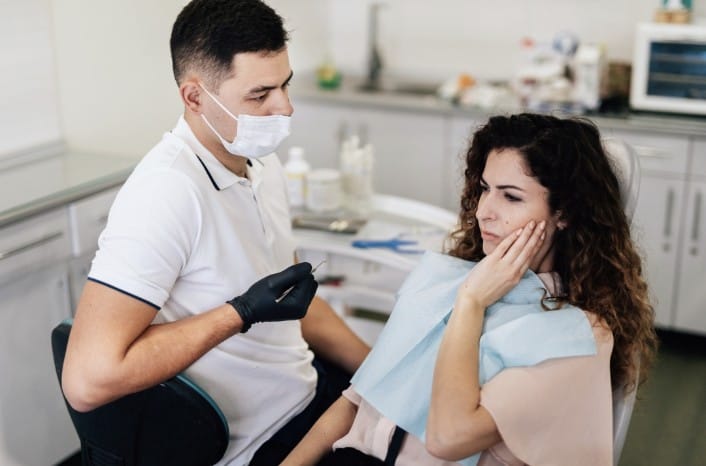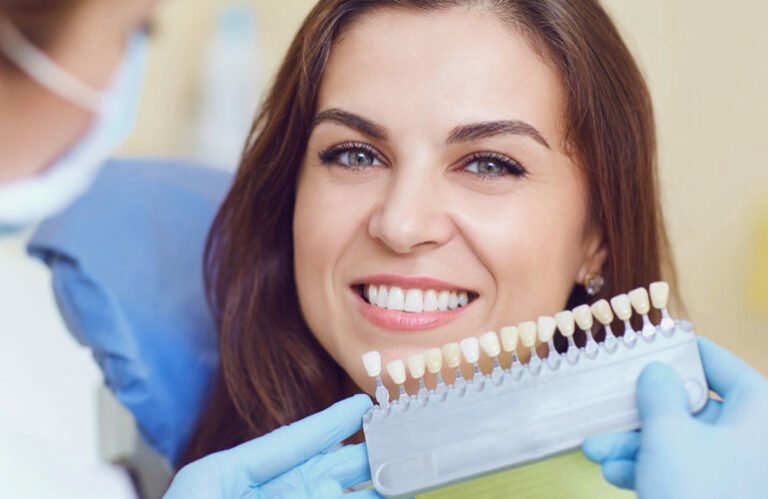An Overview of Orthodontic Treatment
There are many orthodontic treatments offered to patients now, and each has its advantages. Orthodontists have the experience and knowledge to help each patient consider their options. Each patient is unique, and they have different factors like age, jaw imbalances, size of teeth, size of mouth, and more that will determine the orthodontic treatment used. A great orthodontist will help their patients make the best decision to achieve a beautiful smile.
Photo by Gabriella Ally on Pexels
Orthodontic Treatment Options
From metal braces to clear aligners, there are many options to straighten your teeth. Each treatment can also have additional treatments added to the base orthodontic treatment. This article will guide you through some of your treatment options and give you a better understanding of orthodontics.
Braces
Traditional braces are the recommended orthodontic treatment by most orthodontists. By using a combination of brackets and wires attached to the teeth, braces help straighten a smile. Rubber bands may be used for additional force to move the teeth and correct the bite. Braces won’t only help achieve a beautiful smile, but they also help enhance oral hygiene, improve speech, and make eating easier. Braces can correct an assortment of issues, including crooked teeth, crowded teeth, underbite, overbite, jaw alignment, and the overall appearance of a smile.
Types of Braces
- Metal Braces
- Ceramic Braces
- Self-Ligating Braces
- Lingual Braces
- Designer Braces
- Custom Fit Braces
Clear Aligners
Nearly invisible plastic shells that snap over the teeth, clear aligners are a more discreet orthodontic treatment than traditional braces. Clear aligners apply gentle pressure to assist in moving the teeth gradually. Mild to moderate orthodontic problems are the best circumstances to use clear aligners. Clear aligners are custom-made for your teeth and typically worn one week at a time before moving to the next aligner. The number of aligners and treatment time needed varies between patients. The most common conditions that clear aligners can fix are crooked teeth, gapped teeth, crowded teeth, overbite, and underbite.
Photo by Beyza Kaplan on Pexels
Retainers
Treatment isn’t done after braces or aligners; retainers are the key to maintaining the smile achieved. Retainers are designed to keep the teeth straight after orthodontic treatment and can be made of wires, plastic, or acrylic. Retainers fit snugly over or behind teeth, minimizing the natural movement of teeth over time. Teeth will most likely revert to their original positions; patients can ensure the resilience of their new beautiful smile by regularly wearing a retainer.
Types of Retainers
- Clear Retainer
- Fixed Retainer
- Acrylic Retainer
- Wire Retainer
When to See an Orthodontist
If there is concern about the appearance, health, or function of the teeth, then schedule an appointment to consult an orthodontist. The orthodontist will go through a wide variety of orthodontic treatments after the initial consultation. Orthodontists will have the skill and knowledge to determine what treatments are needed for each patient. A customized plan will be made for each patient based on their needs.
How to Choose the Best Orthodontist
There are many orthodontists out there, but how will you know which one is right for you? A dentist may give a referral to see an orthodontist, but you do not need a dentist referral to receive orthodontic treatment. First, look into the orthodontist to make sure they have a good reputation amongst their patients. After that, it is important to know that they specialize in orthodontics. They will have more knowledge and experience to handle each patient’s different conditions. Braces can be affordable, so be sure to look into payment plans and discounts that each orthodontist in your area provides. After your first consultation appointment, be sure that you feel comfortable with the orthodontist and their staff. It is best to see the same orthodontist throughout your orthodontic treatment, so you’ll want to make sure that they make you feel comfortable in their office. Choose the orthodontist that meets your needs!
Photo by Monstera Production on Pexels
Advantages of Orthodontic Treatment
There are obvious cosmetic benefits to orthodontic treatment, but there are also health-related advantages to receiving treatment. When teeth are in proper alignment, it makes it easier to clean them—making it easier to avoid cavities, tooth decay, and gum disease. Straight teeth can lead to better chewing and speed function. Orthodontic treatment can also ease pain related to TMJ disorder, overcrowded mouth, and imbalanced bite. Lastly, orthodontic treatments can help achieve and maintain a healthy and beautiful smile.
Orthodontic Treatments Can Benefit Everyone
Although some patients may need orthodontic treatment more than others, there are benefits for everyone to receive some form of treatment. Braces and clear aligners are the best way to straighten your teeth and improve oral health. Remember that retainers are a must after receiving orthodontic treatment. Don’t let the time you spend with braces or aligners go to waste by not wearing a retainer after treatment! Consult an orthodontist who meets your needs if there are any concerns about the appearance, health, or function of your teeth. A healthy, beautiful smile is worth the time and money of orthodontic treatment. Improve your confidence with orthodontic treatment and schedule an appointment to see an orthodontist today!




